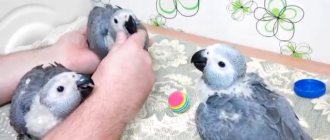- home
- Rat
- Good to know
06/12/2019 Owners of decorative rats who are engaged in training can demonstrate how their smart pets carry out complex commands. They climb a rope, overcome obstacles, and throw tiny balls into hoops. Such tricks cause genuine admiration. This article is for those who want to learn how to train a rat at home.
How to train a rat???
Training begins in the first 2 years of life. Only healthy animals are selected for raising. Elderly, weakened individuals find it difficult to maintain the rhythm of training. They quickly lose interest in the exercise, and it becomes difficult to achieve results.
For training, natural movements are selected that the rat makes involuntarily, due to its habits. First you need to take a close look at what the animal is doing while in the cage:
- he runs in circles in it;
- carries small objects in teeth;
- jumps from one object to another;
- climbs a vertical wall;
- crawls through a narrow gap;
- does a stand on his hind legs.
These movements are performed without preparation, at will and interest. The skills are already inherent in the animal’s character. Therefore, it is better to start forming those actions that the animal is already performing, gradually complicating the elements.
Bathing
The decorative white rat is an intelligent and clean creature that spends a lot of time cleaning its fur. But sometimes these pets still need additional help from their owners in bathing. Many rodents do not like water treatments. Albinos are afraid of water and can experience stress when in contact with it, which is why it is worth teaching the animal to bathe from a very early age. If the cage is cleaned constantly, then you won’t have to bathe the animal often.
There are people who argue that bathing rats at home is prohibited. But there is another opinion, which indicates the permissibility of infrequent water procedures if all safety conditions are met during the process.
It is necessary to bathe white rats in the following situations:
- if the animal is stained with a harmful substance;
- when staying in a dirty cage for a long period;
- if a rat does not clean its own fur, that is, it is sick or unkempt;
- when removing parasites;
- several days before the exhibition.
When a domestic rodent does not like water, there is no need to bathe it unless absolutely necessary. If the animal is not too dirty, then you can wash it without using shampoo. During the procedure, it is worth talking to the rat to rid it of fear. It is necessary to refuse bathing if the animal has a cold, as washing can aggravate the disease.
The rat prefers to live in a clean environment; it does not shit where it eats and sleeps, so installing a toilet in the rodent’s cage will not be superfluous. Accordingly, if there are no unnecessary odors and debris in the house, the animal can be bathed less often.
When bathing a white rat, do not forget about such points as:
- decorative rodents are prone to diseases of the ENT organs, so keeping the animal in a draft after bathing will lead to illness;
- cold indoors, cool water, or undried rat fur can worsen the health of the animal;
- if water gets into the ears of an ornamental pet, otitis media and deafness may occur;
- the use of detergents can cause changes in the natural odor of the animal, disruption of the barrier function of its skin, and cause dryness and scabies.
It is better to buy a special product for bathing rodents, but if you don’t have one, then you should use shampoo for cats. According to experts, you can use baby detergent to bathe your rat, but it should not contain dyes or fragrances. For the procedure of washing a rodent, it is worth preparing several containers with warm water, shampoo, a towel and a piece of soft cloth that will replace a washcloth. Rats should not be washed under running water; before bathing, their ear canals should be covered.
Immersion of the animal in a container with liquid should be done slowly and carefully, while stroking it and distracting it with conversation. The fur should be carefully moistened with water, and then shampoo should be applied with massaging movements. The detergent should be rinsed off in two containers of water, and then dried with a towel or cloth.
The rat's tail should also be washed, as dirt and dead skin particles accumulate on it. The organ should be moistened with a cotton pad that has been previously soaked in a soap solution. After this, the tail is cleaned with a toothbrush, but gently and without pressing. Next, the organ is washed off with warm water, wiped and lubricated with odorless baby cream.
What skills do rats learn?
The natural feature of these animals is their intelligence and intelligence. Their learning success depends on individual characteristics. Each animal has its own range of innate skills. If you are patient with them, reinforce the learned exercises, and reward them, then communication will not only be pleasant, but also successful for both parties.
Rats can be taught:
- use a tray;
- respond to nickname;
- sit on shoulder;
- walk on a tightrope;
- do a stance;
- overcome a course with obstacles;
- roll the ball in the right direction;
- find a way out of the maze;
- make a turn around;
- find a toy among other things;
- understand commands;
- to come running when called;
- shake hands;
- jump from one object to another across open space;
- move the ball in a circle.
This list does not include all the skills that animals learn. To obtain one hundred percent results, following the rules of training will help.
Water attraction for pets
In the summer heat, you can arrange fun entertainment for decorative rats by inviting them to splash in a pool with peas. A wide metal basin, deep bowl or plastic tray with a convex bottom will work as a pool. The selected container is filled with warm water and frozen green peas (or corn kernels, if rats like them) are thrown into it.
Catching peas from the water will not only be a fun game for rodents, but will also help them cool down on a hot day. And to make this activity more exciting for them, you can lean ladders against the outer sides of the makeshift pool, along which the animals will climb to the water.
Training rules
- The main condition when working with rodents is to have enough patience.
- Do not force your pet to work against its will. His interest in doing things eliminates many problems.
- Before starting work, the animal should feel slightly hungry. The last feeding should be 10-12 hours before training.
- The first lesson lasts 15-20 minutes. As the duration of study increases, fatigue sets in and the quality of preparation is reduced to zero. In the future, it is possible to increase the time to half an hour, with breaks for rest and the resumption of lessons after games. If there are several pets, then they take turns working with them.
- You can move on to the next lesson only after mastering the previous one.
- When performing the movement, do not touch the animal with your hands, only scratching when expressing gratitude.
- Give lessons daily, starting first with repeating what you have learned.
- You cannot talk to your pets when learning a number, only commands or sound signals.
- When training rats, actions that cause pain are not allowed.
If the proposed exercises interest your pet, then he will do the work with pleasure.
Affectionate treatment and food encouragement have the best effect on results. To do this, feed sunflower kernels, boiled meat, slices of bananas, baked apples, vegetables, and nuts. Preference is given to those food products that the pet loves. The main condition for this will be the size of the portion of gratitude. It should be small and not saturate the animal. To prevent the animal from getting bored, food is changed more often. Alternating training with games will enhance the quality of the process.
The gingerbread method is very useful in training
Rodents are more energetic in the afternoon, so it’s best to schedule studying at this time of day. The success of the activity depends on the location. If the place is familiar, then the animal feels safe. The exercise area should be wide and not hazardous to the health of the pet. Before starting the exercise, he is given time to master the space and become familiar with the props. The rat must be trained daily. During the lesson, she is taken out of the cage, taught and put back. As soon as the required element is completed correctly, training for a specific action is stopped. If permissible occupational norms are violated, the number of portions of reward increases. The animal gets fat, becomes inactive, and loses interest in the process.
If exercises are not carried out regularly and due attention is not given to them, then teaching a rodent tricks becomes a problem.
You cannot postpone the lesson without consolidating the result. The rodent develops a reflex: complete the task, receive a reward. If the number is performed accurately, a command is pronounced and an award is immediately given. After practicing the skill, the feed is stopped and limited to only stroking.
The animal receives gratitude only during work. Undeserved receipt of tasty food violates the rules of training and reduces the results to zero. In addition to commands, signals in the form of a whistle or click are used. The signal is given at the moment of correct movement.
There are 3 points noted in the training technique:
- Make the student make a movement.
- At the same time give a signal, an order.
- Reward with a treat.
The main technique is gestures. She is associated with a reward in the form of affection and treats. The movement performed by the pet is reinforced by the team, followed by encouragement. After this, the animal is ready to repeat what it has learned many times in a row.
Until the rat understands the task and does not enjoy it, the work causes it stress. Only patience, praise, encouragement and affectionate treatment will help to correctly form new skills and abilities. When playing games, safety measures are observed. You should not leave a baby rat alone with a child. The baby’s activities are unpredictable and, due to oversight, can cause harm to a living creature. Wires, as well as sharp, piercing, and cutting objects are not used as accessories. Sheets of paper from magazines or newspapers are not allowed. Printing ink is poisonous and will harm the student. Lessons are not taught on a surface high above the floor. There is a risk of falling from height and injury. Before the lesson begins, the little rat is tamed and taught to respond to its name. When an animal becomes attached to a person, it ceases to be afraid of him
Method of taming a rodent
Taming a hamster requires patience, attention and systematicity.
It is important to learn to understand your pet’s signals and earn his trust. If you rush, you will get a rodent that bites and runs away because it is afraid of you
As long as the baby is afraid of you, you will not be able to make friends with him. Follow the procedure described below and before moving on to the next step, make sure that the pet has not received stress in the current step.
Give your baby the opportunity to get comfortable in the cage, watch how he eats, drinks, and plays in your presence. Talk to your baby near the cage in a calm voice. Don't know what to say? Sing a song or tell us about your day. Place a seed on your palm (be sure to read which seeds can be given to a hamster) or a piece of cookies or dried fruit. Offer treats through the bars or cage door first. If he shows interest, stick your hand into the cage, but do not touch the hamster. If he runs away, you should never catch him so that he can smell the treats. Just place them in your palm and wait. Don't stop offering your baby treats, but you still shouldn't pet the hamster. Position your palm so that your baby puts his paws on your hand and reaches for the treat. Place the seed so that the baby can take it only after he climbs onto your hand. After he boldly does this, try to carefully pick up the hamster in your arms. Most likely the baby will jump right away, but be persistent and careful. Over time, the baby will realize that your hands do not pose a danger to him.
You already know how to accustom a dwarf to your hands, but how long will it take? It all depends on the individual characteristics and age of the animal. He can get used to the hands of an adult in a few days, but sometimes it takes about a month.
According to the scheme given above, you can tame the Djungarian and the Syrian. You just need to take into account that the Djungarian hamster loves to bite. Representatives of the Syrian breed are calmer.
You already know how to tame a Djungarian hamster, so that this happens easier and faster, consider a few points. Before picking up the baby, you need to wash your hands with soap, because the animals’ sense of smell is better developed than their eyesight. If your palms smell like food, your hamster may bite.
How to train your pet not to be afraid of people?
First, the animal is accustomed to being handled. The familiar smell of hands, voice, image inspires trust:
- the first days they only observe without disturbing him;
- they put a small personal item in the house;
- they place the cage next to the owner so that the pet can see the person and smell him;
- clean the home without making sudden movements;
- play with the pet at the same time, talking gently to him;
- bring their palms closer to the house so that the little rat remembers their smell;
- often picked up and carried into the play area;
- feed food from the palm of the hand through the bars of the cage.
At first, the animal will grab food and run away, but gradually it will get used to it. Next, solid food is replaced with sour cream, spread on the palm. To eat, the little rat will have to get out of its home and lick its hands. When feeding, they talk calmly and praise him.
The next step will be to leave the home and move freely around the house. To do this, take the pet in your arms and sit it next to you on a sofa or chair. In the future, travel through the body is allowed. Gradually, the animal will understand that it is not in danger and will quickly get used to the room.
Team requirements
Teaching your rat commands will take time and patience. On average, the animal remembers your requirements (necessarily reinforced by treats and scratching!) for the 20th to 200th time.
This does not mean that after repeating a task 200 times, the rat will perform it like clockwork!
Perhaps she will refuse to perform some tricks altogether, or perhaps 5-7 repetitions will be enough for her to remember your requirements.
The neural connections in the rat brain and central nervous system responsible for the formation of memory and conditioned reflexes are very different from similar connections in the brains of humans and other animals.
A trained rat is not at all a trained dog or a well-trained person - remember this, and be sure to take into account the individual characteristics of your pet!
A little advice for beginners:
- It is easier to teach one young animal (baby) than two or three of the same age at the same time.
- The rat is an animal no less gregarious than humans and does not tolerate loneliness and closed spaces well. The jogging wheel does not solve the problem of the required amount of movement at all.
- In need of live contact, the young rat will make contact more easily and quickly, choosing as his friend someone who is patient and affectionate - that is, you.
- And no loud shouts with threatening intonation! – Just a gentle voice and patient waiting until the animal “understands” that the repetition of the action is followed by a piece of treat, and then he himself will do the trick, begging for a tasty treat.
Accustoming to a nickname
Simultaneously with taming, they begin to teach the animal to respond to its name.
When choosing a nickname, take into account that rodents perceive better consonant sounds by ear: s, n, m, k, ts, ch, sh, shch . They select a word consisting of 2 syllables: Sasha, Sonya, Shura, Tsara, Tsutsa, Shusha.
You can train to respond to a name if it is pleasant to the rat's ears and is supported by its favorite food. To get results, you need to call out to the test subject more often:
- when feeding;
- during games;
- when stroking the back;
- when treating.
You cannot change the nickname, call it Sonya, then Sonechka, or Baby. The animal does not remember the nickname, but the set of sounds in it. When the sound range changes, the word is not perceived by ear and confuses the animal.
The name must be pronounced in a gentle, calm voice, under favorable circumstances. If the pet continues to ignore the nickname, replace it with a whistle.
Let's study each other
To teach (train) a house mouse, you need to start with 2 things:
- get used to yourself and your name (nickname);
- receive from the animal a “vote of parliamentary confidence.”
Accustoming to a name
A mouse's perception of sounds is very different from a human's; The mouse brain “hears” many sounds differently than a human.
A rat's ears are more concerned with clicks and hisses, without much vocal communication. For example, the name Abraham is unlikely to please her brain, but Sonya, Klaus, Anfisa, Charlik or Tsatsa may well be suitable.
If a combination of sounds is unpleasant for decorative mice, they will simply ignore them. Perhaps because of this misunderstanding of a poorly chosen name, many people believe that a mouse cannot be taught to respond to its nickname.
It’s easy to accustom a mouse to a name if the animal’s name is clear and each approach to a certain set of sounds is accompanied by a cute “treat.”
Use this name when:
- put food;
- take him in your arms;
- give something tasty;
- Scratch the back and cheeks (mice's favorite places).
The mouse, with its sensitive hearing, quickly remembers the sound combination of its name, and if you call it Pusya today and Tiny tomorrow, the mouse will get confused. There must be a nickname! And this should only be said with pleasant associations!
If something goes wrong with the title, get into the habit of tapping or snapping your fingers, clicking your tongue, or whistling softly. The rat will quickly get used to such an unusual (for you) nickname and respond to it.
Receiving a “vote of confidence”
Accustoming an animal to hands is the first stage from which mouse training and further training begin.
The second step is to be able to leave the cage whenever the mouse wishes. The second stage is difficult to do without:
- domestication;
- get used to the name.
When the nice animal learns to easily run when you call and return to the cage on its own, without coercion, you can begin to train it to perform a number of simple tricks. The rat must be absolutely tame!
What tricks do rats learn?
High level of training
- Come when called.
Open the cage door, move a short distance and show the treat at arm's length. When a rat approaches, say its name and praise it. Lengthen the distance each time. Repeat until the pet begins to come when called.
- Stand up on your hind legs.
To make the little rat stand up, the treat held in the hand is brought to the muzzle and the hand is slowly raised up. Rats have a highly developed sense of smell; they will immediately reach for the bait and stand on their hind legs. The order to “stand” and a reward in the form of food immediately sounds. The animal must be hungry, otherwise the bait will not work. There is no need to touch him with your hands, try to help, support him, he must do everything on his own.
- Teach a handshake.
To teach the trick, you need to put a piece of food on your palm and bring it closer to the rat’s paws. Take your time to take the little rat's paw and cover it with a treat. Immediately command: “Give me a paw!”, feed a treat, pet.
- Perform a turn around yourself.
Hold a piece of food between your fingers and bring it to the animal’s nose. Give it a tiny bite. As soon as the rodent eats and asks for more, you must slowly, holding your fingers near the nose, move them to the right, forcing the little rat to turn around itself. If he stops halfway, there is no point in giving a reward. When it completes a circle around itself, give the command: “Turn!”, give the pet a treat and praise.
Each time the movement of the fingers near the nose becomes faster. Having learned that after turning it will receive a treat, the rat will begin to perform the trick only when ordered.
- Bring an item or find it among other items.
To practice this number, take a small ball. A bait is placed inside, out of reach of the animal. The ball should roll easily in your paws. In this exercise, it is better to use a sound that the student has already mastered. After showing interest in the ball, it is immediately taken away and a reward is given. They reward with the same food.
Next time you can give a treat only when you think of pushing the ball at least a little towards the owner. The signal and treat are given immediately. Gradually, the pet will understand that it will receive a treat only if it rolls the ball towards its owner. The distance is increased gradually and little by little.
When the rat has learned its lesson, they offer to find a baited ball among other toys. Mix many balls or balls and place one with bait among them. She will cope with this task quickly.
Will a rat be able to fetch objects and distinguish between them?
Rats themselves like to perform tricks and demonstrate to their owner such natural qualities as intelligence, dexterity and agility. White rats learn more slowly than colored rats.
Any rodent can bring a certain object on command if it is trained to do so. How to do this step by step:
- Roll a small ball in front of your pet's nose. It should interest the rodent. To do this, you can lightly rub it with something “yummy”, for example, boiled shrimp.
- As soon as the animal begins to roll the ball with interest, you need to quickly take it away and give the pet a piece of shrimp (another treat that the ball smells of).
- Return the ball. Repeat this trick several times.
- It is necessary to ensure that the rat receives a treat only when the ball rolls towards the owner. Success is reinforced not only with a treat, but also with an encouraging sound signal, which the rat is familiar with from previous tricks.
- As the lesson is learned, the distance between the ball and the animal is increased by 10–15 cm.
In order for the animal to begin to recognize “its” ball, it is subsequently offered several balls of different colors to choose from. A trained rat will have no problem guessing the right one.
Does a rat need a walking ball?
When keeping animals, the time comes to clean the cage. Pets must be rehomed at this time. Most often, baby rats walk on the floor. For the safety of rats, when walking on the floor, close the doors tightly, hide electrical wires, and take the cat and dog into the next room.
Purchasing a walking ball solves these problems. While the home is being cleaned, the pet walks in a ball, receiving physical activity at this time. In addition, it will not run away or hide in a secret place under the sofa, and the owner will calmly clean up without worrying about the pet.
If there are several rats in the house, then you can arrange a race in the balls.
Age features of training
At different ages, puppies, like children, go through certain periods of growing up. When training, it is necessary to take into account age characteristics and give the child a load that he can handle.
1 month
At the age of 1 to 2 months, each puppy goes through the formation stage. During this period, babies actively communicate with their mother, their brothers and sisters and people. They remember everything new very quickly, and it is at this stage that they become more independent.
At this age, babies need constant communication. Any mistakes in parenting, even minor ones, can lead to serious behavioral problems in the future.
2-3 months
At the age of 2-3 months, the pet enters the socialization phase. During this period, the animal learns to live in society, and it is this time that is considered the best for establishing proper contact and mutual understanding between the dog and the owner.
Most puppies at this age are already in a new home, so the owner must take on the responsibilities of the bitch and explain to the baby what can and cannot be done. At this stage, the small pet begins to be taught the commands “Come”, “Fu”, “Sit”, “Lie down”.
4-6 months
At 4-6 months, the puppy actively walks and communicates with strangers and animals. At this age, the pet can try to win a higher place in the hierarchy, but it has not yet encroached on the place of the leader.
At this stage, the puppy is taught the commands “Come to me”, “Place”, “Walk”, a set of three commands (“Sit”, “Lie down”, “Stand”), “Fetch”, “Nearby”. The pet is also introduced to booms, stairs, and low barriers.
Adviсe:
- If there are 2-3 animals in the house, then give equal attention to each animal. Carry out classes one by one.
- When performing tricks, speak in a calm, gentle voice.
- Replace words-commands with sounds or clicks if necessary.
- Talk more often to quickly get used to your voice.
- Help your pet and praise him when he successfully completes a task.
- Do not raise your voice so as not to scare your pet.
- Feed in tiny pieces so as not to overfeed the rat and extend the training time.
- Combine carbohydrate and protein foods.
- Give a command (word or sound), reward work with rewards in the form of food and scratching.
- Play with your pet between lessons.
- Don't delay your studies. Half an hour is enough.
- Start training with the skill you learned the day before to consolidate.
- Take one number for training per lesson.
- Do not talk when practicing a new skill, use only commands or sound signals.
- Combine a signal or order with the correct action of the student.
- Finish the lesson before your pet becomes tired and loses interest in activities.
- Do not shout, do not punish, do not hurt the animal.
Irina Ivanishchena
I am engaged in professional breeding of hamsters and rats on an ongoing basis. I know something about them that most people don’t know. Always open to constructive discussion
Post Views: 3,044
Treats for encouragement
Rat training is impossible without incentive prizes - treats. Each correctly performed action should be supported by a tasty treat. Often, rodent owners use candy, cookies, and cheese as rewards. However, such “human” food is very harmful to rats. Therefore, for encouragement, it is better to choose the following treats:
- fresh fruits (banana, mango, pear);
- boiled rice;
- pumpkin or sunflower seeds;
- nuts: cashews, walnuts, hazelnuts;
- boiled lean meat.
It is worth noting that for convenience, the delicacy must first be cut into small pieces designed for one bite. Otherwise, the pet will overeat during classes and will be lazy. It is necessary to treat the fluffy only when the command is carried out correctly - otherwise the animal will lose the incentive to exercise.
A little history
Cute, affectionate and tame decorative rats are descended from ordinary wild gray rats, which cause a feeling of disgust in humans, as well as a certain fear. This is not at all surprising, since wild rats have gained notoriety not only for their behavior, but also for their ability to spread various viruses and infections.
The Chinese and Indians first became aware of wild rats several thousand years ago. In the 16th century, as maritime trade developed, rats spread throughout the world, moving from continent to continent. In the 19th century in England, these rodents began to be used in battles against dogs, after catching them. During the same period, some hobbyists began breeding rats, especially tame, white ones. Such tame rodents were shown at exhibitions; in addition, white rats took part in circus performances. Some pet lovers started keeping rodents in their homes because they did not pose any danger to humans.
Some of the individuals were used as experimental animals in various laboratories, which is still practiced today, and some of them moved into the homes of scientists. Scientists saw in rats animals that are quite intelligent and attached to humans. Thanks to the crossing of laboratory rats with wild animals, new species and breeds of domestic decorative rodents have appeared, which can still be found among various breeders.











